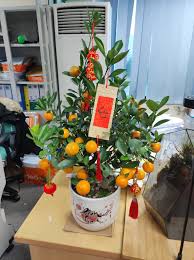Traditional Stilt House Architecture in Minority Ethnic Regions of China: A Cultural and Structural Exploration
Stilt houses, an iconic and fascinating form of architecture, have been integral to the cultural and environmental landscape of many ethnic minority communities across the world. In China, particularly in the southwestern and southeastern regions, stilt houses have been traditionally used by various ethnic groups such as the Zhuang, Miao, Yao, Dong, and many others. These houses, built elevated above the ground on stilts, are not only a practical response to the natural environment but also a reflection of the deep cultural values, traditions, and social structures of these communities. In this article, we will delve into the architectural characteristics of stilt houses, their historical context, the materials used, and the reasons behind their continued importance in minority cultures today.
1. Historical and Cultural Significance of Stilt Houses
The tradition of building stilt houses is deeply rooted in the history and culture of many ethnic minority groups in China. These houses have evolved over centuries as a direct response to the challenging environmental conditions in which these groups live. From mountainous terrains to areas prone to flooding, stilt houses provide practical solutions to many of the problems faced by these communities.
For example, the Miao people, who live in the mountainous regions of Guizhou, Hunan, and Sichuan, have long constructed stilt houses to protect themselves from the dampness and flooding in their valleys. Similarly, the Dong people of Guizhou and Guangxi, known for their wooden drum towers, also build stilt houses to keep themselves elevated from the wet ground and to avoid the seasonal floods that often impact their communities.
These houses are not only functional; they also serve as symbols of the cultural identity of these ethnic groups. In many communities, the construction of a stilt house is an important ritual, often accompanied by ceremonies that mark significant life events. The design and layout of the house also reflect the social structure of the community, with hierarchical divisions evident in the placement of rooms and spaces.
2. Architectural Characteristics of Stilt Houses
Stilt houses are characterized by their elevated wooden or bamboo platforms, supported by vertical columns or stilts. The height of these platforms can vary depending on the region and the specific needs of the community. In some areas, the platforms are elevated several meters above the ground, providing protection from flooding, wild animals, and pests, while also ensuring good ventilation. In other regions, the stilt houses may be built only a few feet off the ground but still provide the necessary protection against moisture and dampness.
The architecture of stilt houses is often designed to be flexible and modular. The layout is typically simple and functional, with a central living area and rooms that are used for specific purposes, such as sleeping, cooking, and storage. In some cases, stilt houses are multi-story, with the ground floor reserved for animals, tools, or communal activities, while the upper floors are used for living quarters. The roofs of these houses are often steeply pitched, designed to shed rainwater and provide extra protection against the elements.
Construction Materials:
Stilt houses are built using locally sourced materials, including wood, bamboo, stone, and earth. The primary material used for construction varies by region and availability. In areas with abundant timber, wooden stilt houses are common, with the wooden beams used to support the structure and the wooden planks forming the walls and floors. In regions where bamboo is more readily available, stilt houses are often constructed using bamboo for the framework and walls. Bamboo’s flexibility and durability make it an ideal material for stilt house construction, and its widespread use is a hallmark of many ethnic minority communities, especially in southern China.
In some areas, particularly those prone to heavy rain, the stilt houses are constructed with raised floors made of wood or bamboo slats, which allow water to flow through and prevent the build-up of moisture inside the house. The roofs of these houses are usually thatched or tiled, with thatch providing excellent insulation and water resistance in many rural areas.
3. Climate and Environmental Adaptation
One of the key reasons for the widespread use of stilt houses in China’s minority ethnic regions is their ability to adapt to the local climate and environment. These houses are especially effective in areas where the weather is humid, prone to heavy rainfall, or subject to seasonal flooding. Elevating the living spaces off the ground ensures that the interior of the house remains dry and well-ventilated.
Flood Prevention:
In many of China’s rural areas, seasonal floods are a common occurrence, particularly in the southern and southwestern regions. Stilt houses provide a simple yet effective solution to flood risks. The elevated platform ensures that the living space remains above the water level, keeping the house dry even during heavy rains or flash floods. This feature is especially important in communities where rice farming is prevalent, as rice paddies are often flooded during planting season.
Temperature and Humidity Control:
Stilt houses also provide natural cooling and ventilation, which is vital in the hot and humid climates of southern China. The open space beneath the house allows air to circulate freely, cooling the interior and keeping it comfortable during the summer months. The natural airflow also helps reduce the buildup of humidity inside the house, which can be a significant problem in areas with high moisture levels. By elevating the living space, these houses remain cooler in summer and warmer in winter, providing a more comfortable living environment for the residents.
4. Social and Cultural Importance of Stilt Houses
Stilt houses play an important social role in many minority communities. The design of these houses reflects the social structure of the group, with the division of space and rooms often signifying different roles within the family or community. For instance, in some communities, the upper floors of the house are reserved for the senior members of the family, while the lower floors are occupied by younger generations or animals.
In addition to their functional and social significance, stilt houses are also important cultural symbols. The process of building a stilt house is often a community effort, with neighbors and family members coming together to help in the construction. This collaborative spirit fosters strong bonds within the community, and the house itself becomes a symbol of the collective effort and shared values of the people.
The stilt house also plays a central role in the rituals and ceremonies of many ethnic minority groups. In some communities, the construction of a new house is seen as an important life event and is marked by elaborate ceremonies. These rituals may involve the entire community, with offerings to the ancestors or local deities to ensure the safety and prosperity of the household.
5. Challenges and the Future of Stilt Houses
As urbanization and modernization have taken hold in many parts of China, the traditional stilt house is facing new challenges. In some areas, people are abandoning these traditional structures in favor of more modern, brick-and-concrete homes, which are seen as more durable and easier to maintain. However, the stilt house remains an enduring symbol of cultural heritage and resilience, and many communities continue to build them, adapting them to the demands of modern life.
Preserving Cultural Heritage:
There is a growing movement to preserve traditional stilt house architecture as part of the cultural heritage of China’s ethnic minority groups. Many local governments and cultural organizations are working to protect these unique structures by promoting traditional building techniques and materials. Furthermore, stilt houses are increasingly being recognized as a sustainable form of architecture, with their low environmental impact and natural climate control features.
Modern Adaptations:
Some communities are finding ways to integrate modern technologies with traditional stilt house designs. For example, solar panels are being used to provide electricity in remote areas, while modern insulation materials are being incorporated to improve energy efficiency. These adaptations allow stilt houses to meet the needs of contemporary living while still retaining their cultural and environmental significance.
6. Conclusion
The stilt houses of China’s ethnic minority regions are much more than mere dwellings—they are living symbols of cultural resilience, environmental adaptation, and social unity. Built with materials that are locally sourced and designed to address the specific needs of each community, these houses remain an essential part of the cultural identity of many ethnic groups in China. While they face challenges in the face of modernity, stilt houses continue to stand as enduring examples of the ingenuity and resourcefulness of the people who call them home.
As we look toward the future, it is crucial to preserve and adapt these traditional architectural forms, ensuring that they remain a vital part of China’s cultural heritage while embracing the possibilities of sustainable and modern living. The stilt house is a testament to the harmonious relationship between humanity and nature, a balance that remains as relevant today as it was centuries ago.


